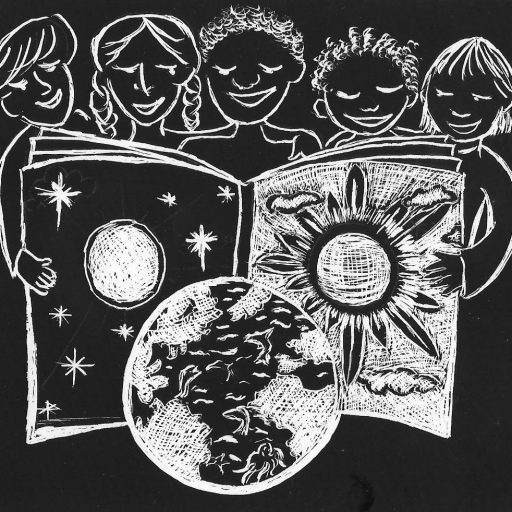Today I’m excited to interview Mary Rodgers, Vice President and Editor-in-Chief of Lerner Publishing Group, an independent award-winning publishing house based in Minnesota. Founded in 1959, Lerner Publishing now has several imprints, including the well-known Carolrhoda Books. Lerner Books is known for its amazing collection of nonfiction books. The company also has an imprint devoted to books in Spanish. Some of the imprints do publish fiction ranging from picture books to young adults. Lerner’s Bad News for Outlaws, written by Vaunda Micheaux Nelson and illustrated by R. Gregory Christie, won the 2010 Coretta Scott King award. Congratulations! 🙂
I met Mary at a SCBWI conference, and I have rarely seen a publisher more excited to talk about multicultural books. I am honored that she agreed to this interview.
Nathalie: Mary, thank you so much for joining us today.
Mary Rodgers: Thanks Nathalie. I’m happy to be here.
What are your thoughts on the state of multicultural books in the U.S., i.e. are there “enough,” are they needed, is there a market?
MR: Lerner Publishing Group has been publishing multicultural fiction and nonfiction titles for more than fifty years. In fact, Harry Lerner, founder of our company, is proud that in the 1960s, when bigger publishers weren’t buying true multicultural art (i.e., art in which people of color were a natural part of the story), his little start-up company was.
But to answer your questions, the incredible diversity within the U.S. population creates an ongoing need for multicultural titles. The market for some of these titles may be regional—that is, the sales may cluster where the groups are clustered—but there’s definitely a need.
How does Lerner Books acquire multicultural manuscripts? (Note: is there a quota? Do you specifically look for them?)
MR: There’s no quota. Much of our nonfiction, however, is series driven. When we develop a new series, we make sure that stories about people of color are part of the mix. So in that sense we specifically plan to include multicultural subjects.
As a publisher, what are the challenges you encounter when it comes to publishing and marketing a book showcasing cultural diversity?
MR: We want any multicultural book that we publish to faithfully and fairly represent the culture in question. The visuals, as well as the text, need to achieve this. We avoid stereotyping and try very hard to achieve a balance of ethnicity, gender, and age in our multicultural titles.
What are some of your favorite non-fiction titles, books you think should have a place on every library and family book shelves?
MR: I’m lucky to be able to read strong nonfiction every week in my work. I love a good story, but I also love to browse. On the upper grades side, we’ve published two series that always catch my eye for browsing. One is Images and Issues of Women in the Twentieth Century. It covers the evolution of the roles of women in the 1900s. The other is Decades of Twentieth-Century America. It discussed various aspects of American culture—politics, media, sports, literature, economics—in each decade. I’ve browsed these with family and friends. Both series are fabulous conversation starters. On the younger side, picture book biographies—such as Bad News for Outlaws, which just won the Coretta Scott King Author Award—are a lot of fun too.
What type of manuscript is Lerner Books currently looking for?
MR: Good stories, mainly. Strong multicultural nonfiction, whether offered as single titles or in series, begins with good topics. “Good” can signify that the topic is highly curricular, meaning that young readers need solid, informative material on the topic because they are likely to run into it in their studies. “Good” can indicate that the story is gripping, unusual, or new in some way. Or “good” can simply mean the topic is of high interest to kids and has entertainment value. Strong nonfiction also relies on an authoritative voice that wants to tell a good story.
Last but not least, do you have a message for writers of color and/or writers of books with multicultural content?
MR: Know your topic well and be able to explain difficult or sensitive ideas in an interesting way. Understand your audience—what do they already know? What would surprise them? What would engage them? Look for stories that haven’t been over published.
Dear Mary, thank you very much for being a champion of cultural diversity in children’s literature, for your words of advice and for your time. 🙂
For more information on Lerner Publishing Group, please visit:
o Lerner Publishing’s website
o Learn about LPG’s award-winning imprints here!
o Submission Guidelines
o Lerner Classroom
o LPG’s Blog
o Facebook
o Follow Lerner Publishing on Twitter!







Nathalie, what a great and informative interview! I am delighted to say Lerner has published 11 of my biographies, most of which are multicultural and have won prestigious awards such as the Carter G. Woodson. You might want to look at: WHAT ARE YOU FIGURING NOW? (Benjamin Banneker); GO FREE OR DIE (Harriet Tubman); WALKING THE ROAD TO FREEDOM (Sojourner Truth); DEMANDING JUSTICE (Mary Ann Shadd Cary); WITH OPEN HANDS (Biddy Mason); NATIVE AMERICAN DOCTORS (Susan LaFlesche Picotte); ARCTIC EXPLORER (Matthew Henson); WHAT I HAD WAS SINGING (Marian Anderson).
Mary was a presenting editor at our recent Northern California SCBWI, and a fine day it was indeed. She was open, energetic, helpful and encouraging – just as we see in your interview here.
Thank you for this interview and for your wonderful and inspiring blog. I look forward to reading it every day.
Jeri
LikeLike
Hi, Jeri! It’s nice to hear from one of LPG’s authors. Thank you for the titles you shared, I’m adding the links. I happen to own several of them. 🙂
LikeLike
Another excellent interview. I know I don’t comment often enough, but I just want to let you know how much I appreciate your blog.
LikeLike
Blythe, thank you for everything.
LikeLike